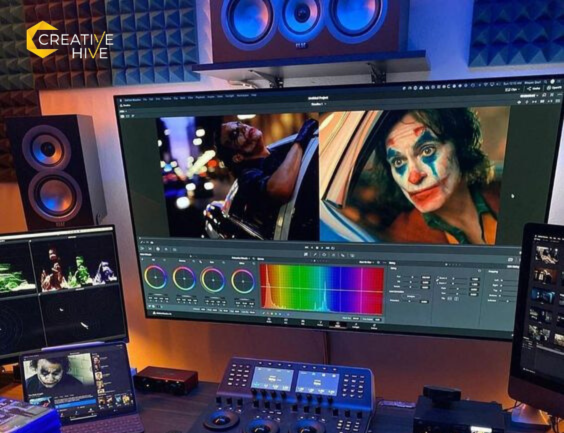Color grading serves as the final artistic touch in the journey of bringing a video to life. It's the magic wand that transforms raw footage into a visual masterpiece, enhancing its appeal and conveying emotions effectively. When every frame tells a story in video production, color grading is seen as an essential element of creativity. It's not merely a technical process but a form of visual storytelling in its own right, where hues, contrasts, and tones are carefully orchestrated to evoke specific moods and atmospheres.
Understanding Color Grading
Color grading isn't just about making colors pop; it's a meticulous process of manipulating hues, contrasts, and tones to evoke specific feelings and atmospheres. Using specialized software like Adobe Premiere Pro or DaVinci Resolve, video producers meticulously tweak various parameters to achieve the desired look.
Enhancing Visual Appeal
At its core, color grading elevates the visual appeal of a video. By harmonizing colors and adjusting brightness and contrast, it breathes life into the footage, making it visually captivating and memorable. Whether it's adding vibrancy to a product showcase or creating a moody ambiance for a dramatic scene, effective color grading enhances the overall impact of the video.
Correcting Color Imbalances
Even the most meticulously shot footage can suffer from color inconsistencies. Color grading acts as a corrective tool, balancing out hues and tones to ensure natural-looking visuals. From correcting white balance issues to refining skin tones, it ensures that every frame is visually pleasing and cohesive.
Establishing Brand Identity
Consistency is key in brand communication, and color grading plays a pivotal role in establishing a brand's visual identity. By employing a consistent color palette across all videos, brands can reinforce their image and foster brand recognition. This cohesive visual language strengthens brand recall and fosters a deeper connection with the audience.
Crafting Cinematic Aesthetics
Color grading isn't just about realism; it's about infusing videos with cinematic flair. By mimicking the rich tones and textures of film, color grading can elevate ordinary footage into cinematic masterpieces. From creating vintage looks to achieving modern cinematic aesthetics, it adds depth and sophistication to the visual narrative.
Ensuring Visual Consistency
In a video, consistency is key to maintaining viewer engagement. Through meticulous color grading, video producers ensure that every shot seamlessly transitions into the next. This visual consistency creates a cohesive viewing experience, keeping the audience immersed in the story without distractions.
Amplifying Emotional Impact

Colors have the power to evoke emotions and convey messages subtly. By leveraging the psychology of color, color grading can amplify the emotional impact of a video. Warm tones evoke feelings of comfort and intimacy, while cool hues instill a sense of calmness and serenity. By choosing the right color palette, video producers can effectively convey the intended message and resonate with their audience on a deeper level.
Expanding Creative Boundaries
Color grading isn't just about adhering to standards; it's about pushing creative boundaries and exploring new possibilities. With the advent of high dynamic range (HDR) and wide color gamut (WCG) technologies, colorists can now unleash their creativity like never before. These advancements enable them to create visuals with unprecedented depth, richness, and realism, pushing the boundaries of visual storytelling.
Collaborative Workflow
Color grading is often the culmination of a collaborative effort involving directors, cinematographers, and colorists. Through open communication and shared vision, they work together to ensure that the color grading enhances the narrative and serves the story. This collaborative workflow fosters creativity and innovation, resulting in visually stunning and emotionally resonant videos.
Conclusion
Color grading is one of the most powerful storytelling tools in video production. From enhancing visual appeal to reinforcing brand identity and amplifying emotional resonance, its influence is profound. By mastering the art of color grading, video producers can transform ordinary footage into captivating visual narratives that leave a lasting impression on the audience.
As technology continues to evolve and creative boundaries expand, color grading will remain at the forefront of visual storytelling, shaping the way we perceive and experience the world through the lens of video. Whether you're utilizing a video post-production service in Dubai or working in any other part of the world, let your creativity soar as you craft compelling stories to capture the attention of audiences everywhere.

